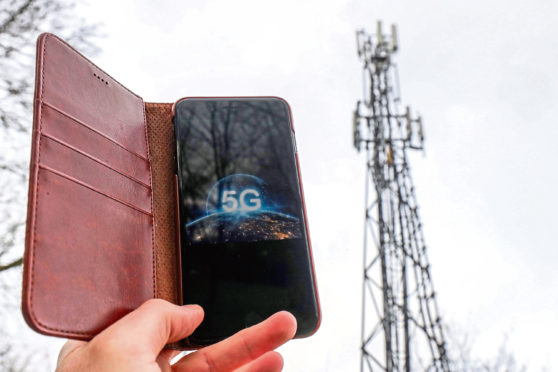This wee mouse and I clicked a long time ago.
It is just amazing. It doesn’t eat or drink anything.
It does not squeak the house down asking to be taken for a walk.
It just sits on my desk looking at me and you would not even know it was there because it is just so quiet until you want to find it.
Have you clicked yet? Yes, it’s my computer mouse.
Sadly, the co-creator of the computer mouse, William English, has died, aged 91.
The ex-US Navy man built the first mouse in 1963, using an idea from his workmate Doug Engelbart while the pair were working on early computing.
It wasn’t until the 1980s, however, until it began to be the clicker of choice on our desks as home PCs became popular.
The computer mouse has come a long way. Bill and Doug’s first version was basically a wooden block with a single button which had two rolling wheels underneath it at 90-degree angles.
That would record vertical and sideways movement. It didn’t have a name back then, so they gave their own name to this Manually Operated Unnamed Switching Equipment. I just made up that name right now.
Instead, Bill and Doug called it the X-Y Position Indicator For A Display System, or XYPIFADS for short.
Catchy, eh? Was that not also a type of bell-bottom trouser from the 1960s?
Our language is constantly changing. Technology particularly has brought in huge changes to words and phrases.
There was a day when the web was where the spider lived. Then one day around 1990, I remember hearing how another web would allow us to speak to people all round the world through our computers.
It said it could revolutionise how we do business, but I couldn’t see it. Nah, I thought. I didn’t get it.
That’d never catch on. We had phones and phone boxes for any communication that we needed. Sometimes my predictions aren’t spot-on.
New words aren’t coming in, but we’re to use a new buzzphrase, repurposing our language.
Take a hard drive, for example. A hard drive in the 1970s was a trip along mainly single-track roads in a sparsely upholstered furniture van to deliver wardrobes and carpets to the nouveau riche fishing families of well-to-do places like Scalpay.
I became briefly a high-flier on the commission from kitting out houses on that isle and then delivering the top-of-the-range tallboys soon after.
My undercarriage has not been the same since.
Our daughter spends her days in the Rest of the UK (non-Welsh division) building applications for computers at some of the biggest companies in the world.
Learned types like her used to be known as developers, but now the term is software engineer.
Her auntie is very confused. “Oh heery, I thought she was in computers. She’s a software engineer? Wait a minute, I think I know what that is. She makes fabric softener? Am I right?”
Mrs X meanwhile has become very au fait with it all. Her questions come in rapid-fire bursts and are very different. “X, are you there? You know Google? That thing that answers your questions when you Google stuff? You know it, right? I want to know something that has been bothering me, right? Is Google male or female?”
There’s only one answer to that. Female, because it doesn’t let you finish a sentence before making a suggestion of its own. She knows I’m right.
Some people are worried that some technology companies are pulling ahead of the field and, they fear, packing their tech with secret features.
Donald Trump is blaming China. He is furious at them and wants them banned.
Boris Johnson dithered, but Trump said: “It’s my way or the Huawei.” At least we know how to pronounce that name now.
It’s a worry if the Chinese are hiding listening devices in mobile phones. Where next? In animals? What do you call a wee dog that spies on people? A ChiHuawei!
Some of Donald Trump’s advisers reckon Huawei may be putting spy equipment in household appliances.
Imagine that? Your fridge beaming back to the Communist Party HQ in Beijing that you have put in some smelly garlicky cheese and a black pudding. Bet you that’s where they got the name. It’s the sound someone makes when they sniff the Boursin – Huawei!
What else could they bug? Maybe our new coffee machine is signalling Shanghai as it gurgles.
It is very state-of-the-art and was very expensive. I call it the percolator fiscal.
Since the 1970s, the world has radically changed due in no small part to computers.
Technology of all kinds has changed us and how we spend most of our time and, of course, the entire language has changed with it.
Back then, we thought a cursor swore a lot, a mousepad was where Mickey lived, a keyboard was just a piano and I had a 3.5-inch floppy. Nowadays, I tend to keep that sort of thing to myself.











